Beautiful Brugmansias
The first time I saw this plant was in a plant catalog – scores of these blooms hanging down like spectacularly glorious parallel horns. Maybe you have to be a “plant guy” to get chills from something like that, but I admit that I did. And then I began to see them showing up in Texas nurseries and I started growing them. I fell in love.
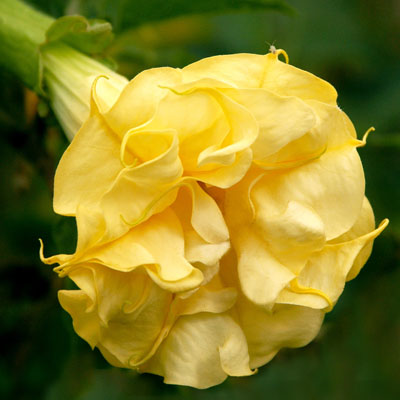
Photo: Double yellow brugmansia is especially showy.
However, like most of our true loves in life, these come with assets and liabilities. We need to point them all out so you can decide if these are plants you want to consider.
On the plus side…
• They’re gorgeous. (That one had to go first.)
• They love Texas sun and heat.
• They’re easily grown as long as you keep them well fed and moist.
• Their flowers open at night, so they bring excitement to patio parties.
• They’re sweetly fragrant.
To the negative side…
• They are poisonous, so if you decide to grow it, do so with complete knowledge and keep it away from children. Of course, parts or all of oaks (acorns), tomatoes (leaves), rhubarb (leaves before cooking), daffodils and tulips (bulbs), Carolina jessamine (flowers), azaleas (flowers), oleanders (all parts of plant), and castor beans (seeds) are also poisonous. We need to teach our kids not to graze in our gardens.
• They are tropical, so they freeze to the ground with the first killing frost. Brugmansias are killed entirely by hard freezes, so they may need to be brought indoors. You can mulch over them to protect their crowns and pull them through in borderline areas of Central and North Central Texas.
• A few insects bother them, including caterpillars, grasshoppers and whiteflies, but all can be kept in check.
• May be messy if used over pool or patio.
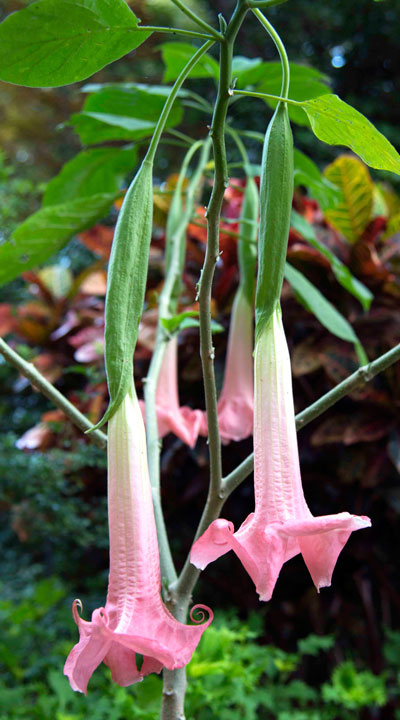
Photo: Cherub brugmansia blooms in Sperry family gardens just a few days ago. Note how flowers hang straight downward.
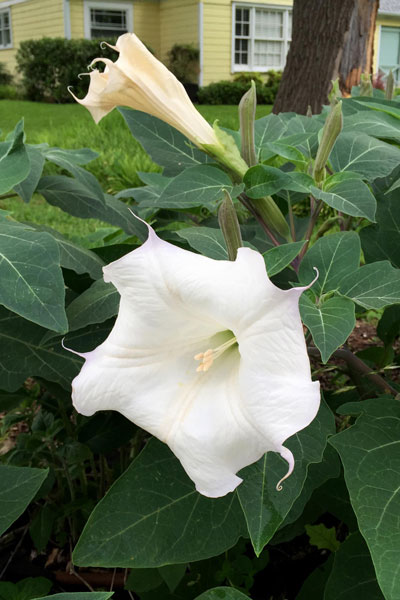
Photo: Moonflower, also known as angel’s trumpet, blooms in late evening sun in summertime.
The differences between brugmansias and daturas…
Brugmansia flowers hang straight down. They also tend to be very long (to 12 or 14 inches). Most brugmansias tend to grow into small, upright tree-form plants.
Daturas (also known as moonflowers and angel trumpets) have pure white flowers that are usually held outward, even slightly upward at a 45-degree angle. Moonflowers are shubbier.
Both types are capable of freezing to the ground in mild winters, then coming back from their roots the next spring. Moonflowers (daturas) reseed freely and yield scores of tiny black seeds. Ranchers know moonflower as jimsonweed, and frankly, they hate it. It’s poisonous to livestock, and it uses valuable water in their pasturelands.
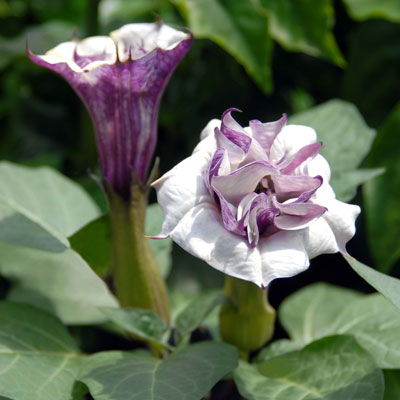
Photo: Double purple datura is showy, compact.
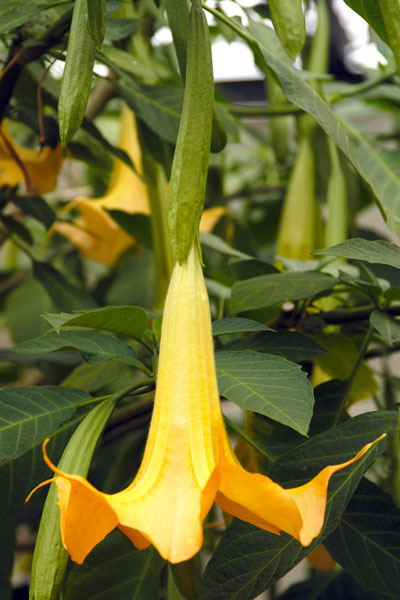
Photo: Bright gold brugmansia hangs straight down.
Where can you find these plants?
Many independent retail garden centers will have brugmansias in spring and early summer. Some will also have daturas. They’re also available from national sources, although shipping regulations may vary from state to state.
I came across this link to an international organization that supports the many types of brugmansias, and I thought you might find it of interest as well. http://www.brugmansia.us/species/index.html
